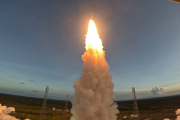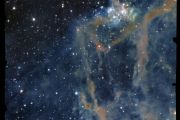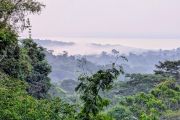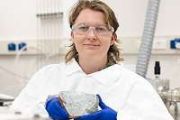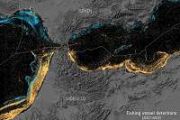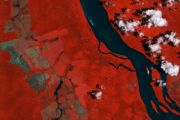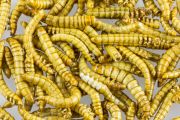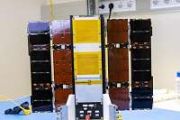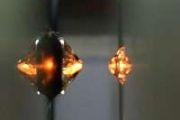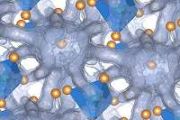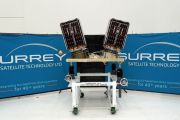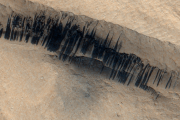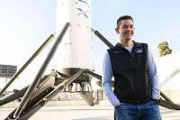
Copernical Team
Lunar glass shows Moon asteroid impacts mirrored on Earth
 A Curtin-led research team has found asteroid impacts on the Moon millions of years ago coincided precisely with some of the largest meteorite impacts on Earth, such as the one that wiped out the dinosaurs.
The study also found that major impact events on Earth were not stand-alone events, but were accompanied by a series of smaller impacts, shedding new light on asteroid dynamics in the i
A Curtin-led research team has found asteroid impacts on the Moon millions of years ago coincided precisely with some of the largest meteorite impacts on Earth, such as the one that wiped out the dinosaurs.
The study also found that major impact events on Earth were not stand-alone events, but were accompanied by a series of smaller impacts, shedding new light on asteroid dynamics in the i China's Mars rover reveals more of subsurface
 What does the subsurface of Mars' northern lowlands have in common with a French mille crepe cake? They both consist of a number of layers, according to the latest findings by China's Zhurong Mars rover published in the journal Nature on Monday.
The discovery showed that the evolution of the Martian surface environment is more varied and complex than previously anticipated, experts said. L
What does the subsurface of Mars' northern lowlands have in common with a French mille crepe cake? They both consist of a number of layers, according to the latest findings by China's Zhurong Mars rover published in the journal Nature on Monday.
The discovery showed that the evolution of the Martian surface environment is more varied and complex than previously anticipated, experts said. L Once upon a rover
 Once upon a time - early 2013 - there was a small corner room in the Flight Projects building at JPL where the walls and windows were coated in pages and pages of paper. These pages contained the facts and arguments being assembled by the Mars 2020 Science Definition Team, who were asking: what must the next rover to Mars do?
We rearranged those pages over and over during the next few mont
Once upon a time - early 2013 - there was a small corner room in the Flight Projects building at JPL where the walls and windows were coated in pages and pages of paper. These pages contained the facts and arguments being assembled by the Mars 2020 Science Definition Team, who were asking: what must the next rover to Mars do?
We rearranged those pages over and over during the next few mont Asteroid that formed Vredefort crater bigger than previously believed
 About two billion years ago, an impactor hurtled toward Earth, crashing into the planet in an area near present-day Johannesburg, South Africa. The impactor-most likely an asteroid-formed what is today the biggest crater on our planet.
Scientists have widely accepted, based on previous research, that the impact structure, known as the Vredefort crater, was formed by an object about 15 kilo
About two billion years ago, an impactor hurtled toward Earth, crashing into the planet in an area near present-day Johannesburg, South Africa. The impactor-most likely an asteroid-formed what is today the biggest crater on our planet.
Scientists have widely accepted, based on previous research, that the impact structure, known as the Vredefort crater, was formed by an object about 15 kilo Satellite Vu signs SpaceX launch contract to deploy thermal monitoring capabilities
 British Earth Observation company, Satellite Vu has signed a second SpaceX launch contract for their second satellite, doubling their thermal data collection capacity, faster than planned, amidst rising climate concerns.
The deal will see Satellite Vu's unique Mid-wave Infrared (MWIR) imaging satellite launched into Sun-synchronous orbit (SSO) aboard a Falcon 9 rocket in early 2024. The sa
British Earth Observation company, Satellite Vu has signed a second SpaceX launch contract for their second satellite, doubling their thermal data collection capacity, faster than planned, amidst rising climate concerns.
The deal will see Satellite Vu's unique Mid-wave Infrared (MWIR) imaging satellite launched into Sun-synchronous orbit (SSO) aboard a Falcon 9 rocket in early 2024. The sa Earth from Space: Melt ponds in West Greenland
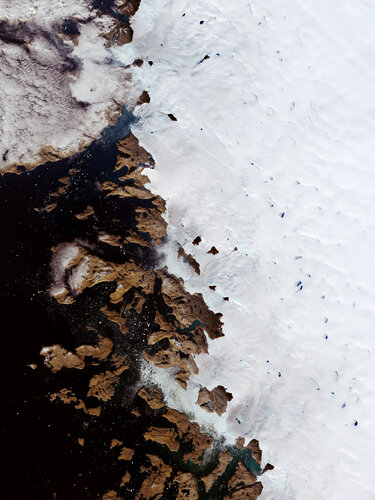
During spring and summer, as the air warms up and the sun beats down on the Greenland Ice Sheet, melt ponds pop up. Melt ponds are vast pools of open water that form on both sea ice and ice sheets and are visible as turquoise-blue pools of water in this Copernicus Sentinel-2 image.
Europe’s new weather satellite sets sail
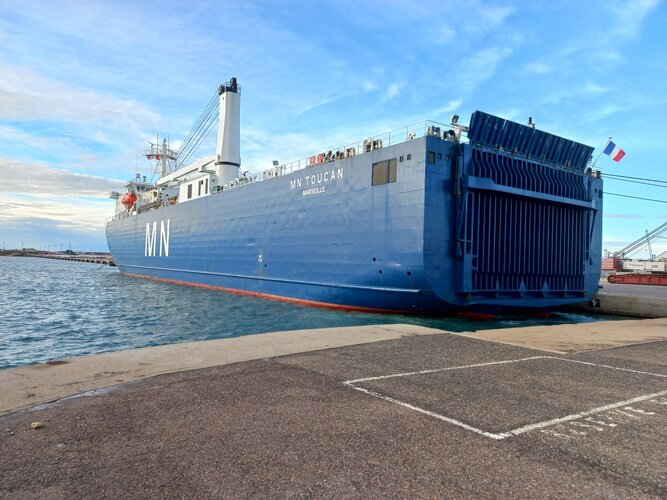
The first of Europe’s Meteosat Third Generation satellites is now safely aboard a ship and making its way across the Atlantic to French Guiana where it will be readied for liftoff in December. Once launched into geostationary orbit, 36 000 km above Earth, this new satellite, which carries two new extremely sensitive instruments, will take weather forecasting to the next level.
Moon science generation
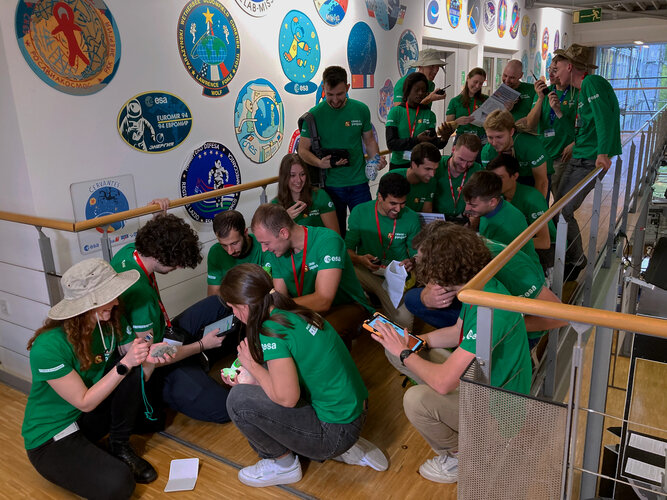 Image:
Image:
What do you call three or more space fanatics? Interns.
Imagine landing your dream internship at the European Astronaut Centre (EAC), and then being unable to go into work. A group of excellent young professionals found themselves in this situation during the pandemic.
This week, however, 23 of these interns finally got their opportunity to visit the home of Europe’s Astronaut corps. The interns had been working on a range of projects developing tools to support astronaut training for missions to the Moon and beyond. Upon visiting, they were immediately immersed in the centre’s activities.
The group, imaged here logging data into
NASA, SpaceX study boosting Hubble to extend its lifespan
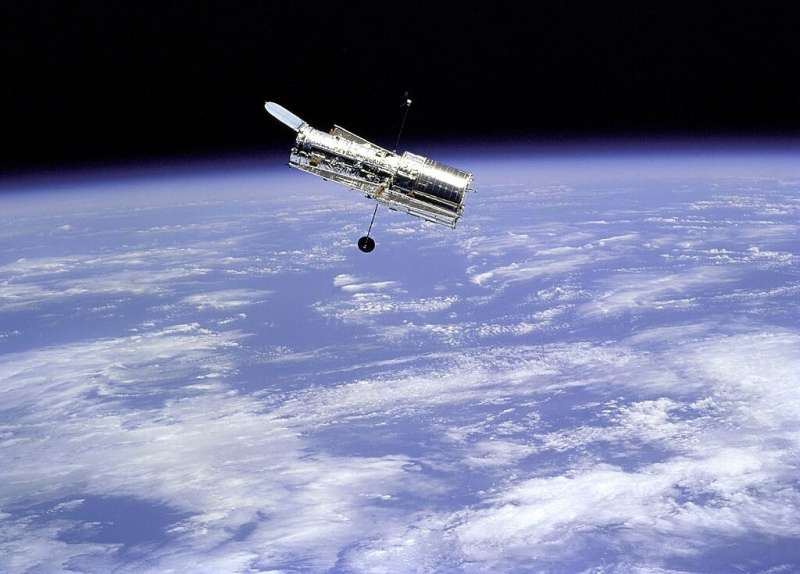
NASA and SpaceX have agreed to study the feasibility of awarding Elon Musk's company a contract to boost the Hubble Space Telescope to a higher orbit, with a goal of extending its lifespan, the US space agency said Thursday.
The renowned observatory has been operating since 1990 about 335 miles (540 kilometers) above Earth, in an orbit that slowly decays over time.
Hubble has no on-board propulsion to counter the small but still present atmospheric drag in this region of space, and its altitude has previously been restored during Space Shuttle missions.
The proposed new effort would involve a SpaceX Dragon capsule.
"A few months ago, SpaceX approached NASA with the idea for a study whether a commercial crew could help reboost our Hubble spacecraft," NASA's chief scientist Thomas Zurbuchen told reporters, adding the agency had agreed to the study at no cost to itself.
New weather satellite on its way to launch
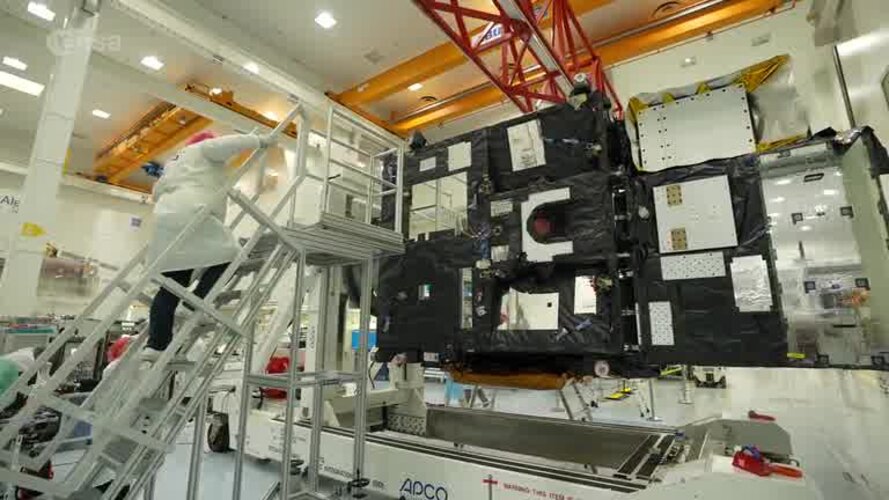 Video:
00:04:04
Video:
00:04:04
The final pre-launch preparations for the first Meteosat Third Generation (MTG) satellite are underway. The first satellite, called MTG-I1, built by a European industrial consortium led by Thales Alenia Space carries two imagers: an advanced Flexible Combined Imager and, in a first for Europe, a Lightning Imager that will allow the earlier detection of storms and extreme weather events, as well as improve aviation safety.
Building on the long-standing partnership between ESA and Eumetsat, the MTG-I1 will be one of six satellites operating in a fleet, of three at a time, to ensure the continuity of data from

